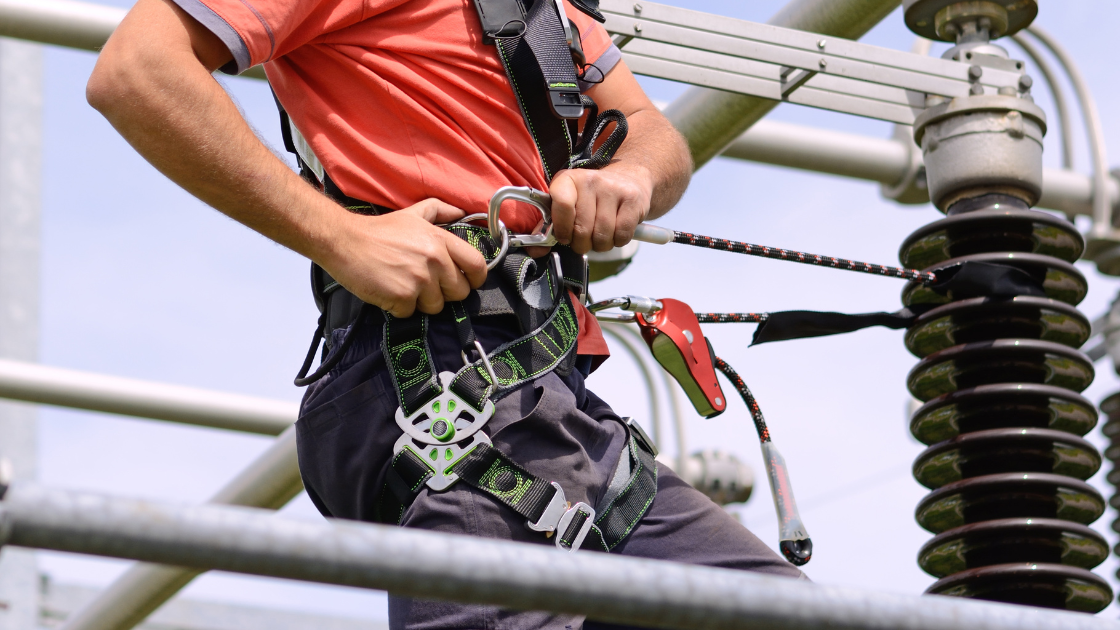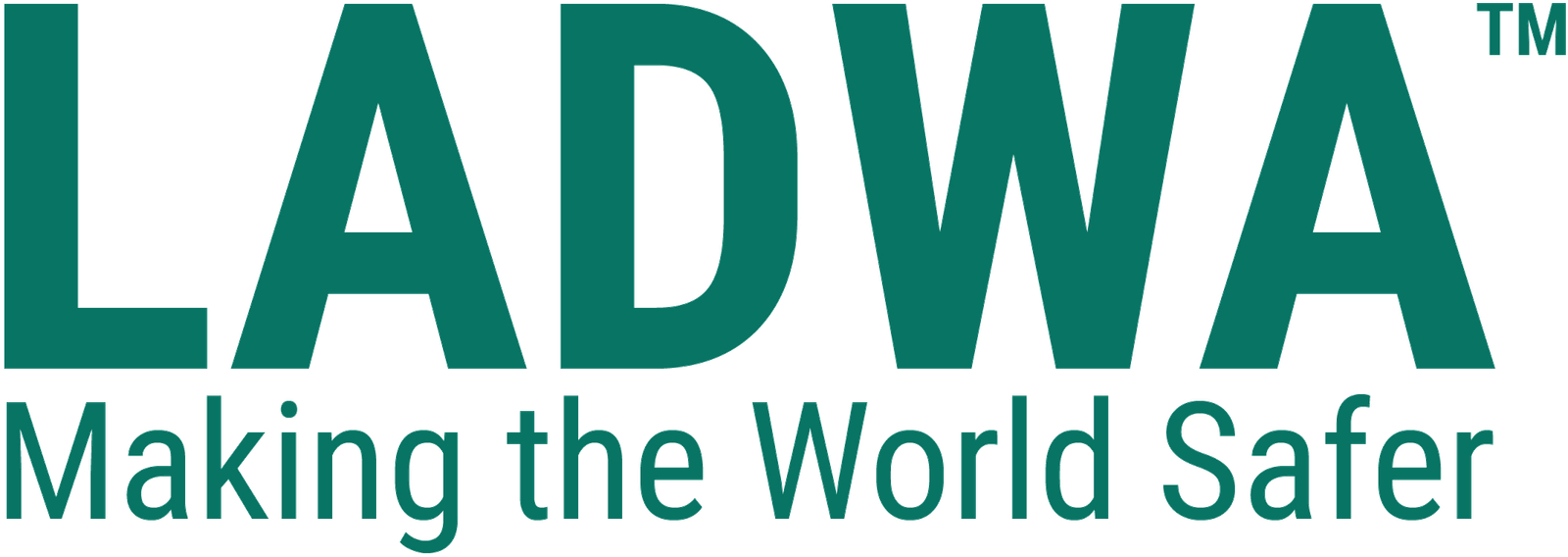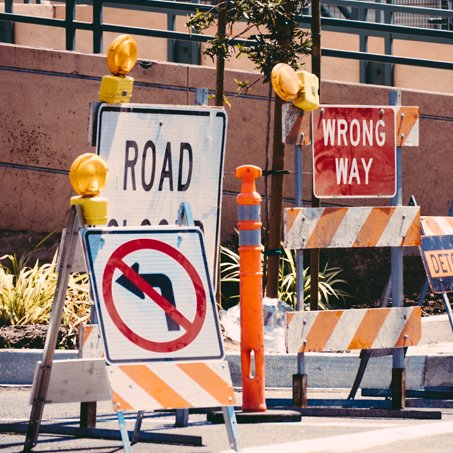Top 10 Reasons to Wear Safety Belt or Harness
Wearing a Safety Belt or Harness is important for personal safety when traveling in a vehicle, operating heavy machinery, or working at heights. Here are some more detailed points on the top 10 reasons to wear a safety belt or harness:
- Reduces the risk of injury in case of an accident: Wearing a safety belt or harness keeps you secured to your seat, preventing you from being thrown forward or out of the vehicle in case of an accident. This reduces the risk of injury or death by keeping you in place and absorbing some of the impact of the crash.
- Prevents secondary collisions: Wearing a safety belt or harness can also prevent you from colliding with other passengers, objects, or the vehicle itself in case of an accident. This can reduce the severity of injuries and help prevent additional accidents.
- Reduces the risk of serious head and spinal injuries: Wearing a safety belt or harness can keep you in an upright position and prevent your head and spinal cord from being seriously injured. This is particularly important in high-speed accidents, where the force of impact can cause serious injuries.
- Keeps you in control of the vehicle or machinery: In case of an accident, wearing a safety belt or harness can help you maintain control of the vehicle or machinery. This can allow you to potentially avoid a more serious accident by keeping you in your seat and allowing you to react to the situation.
- Protects your internal organs: Wearing a safety belt or harness can help protect your internal organs from serious injury in case of an accident. This is because the belt or harness absorbs some of the impact of the crash, reducing the force on your body.
- Prevents you from being thrown from your seat: Wearing a safety belt or harness can prevent you from being thrown from your seat in case of an accident. This can be particularly important when operating heavy machinery or working at heights, where falling from your seat can be extremely dangerous.
- Increases the likelihood of surviving an accident: Wearing a safety belt or harness can significantly increase the likelihood of surviving an accident. This is because it keeps you in place and reduces the force of impact on your body, which can help prevent serious injuries or death.
- Helps prevent driver fatigue: Wearing a safety belt or harness can help prevent driver fatigue by providing additional support and reducing the risk of injury in case of an accident. This is particularly important for long-haul drivers or those operating heavy machinery for extended periods.
- Improves safety when working at heights: Wearing a safety harness is essential when working at heights to prevent falls and serious injuries. The harness keeps you secured to a stable anchor point, which can prevent you from falling and potentially save your life.
- Sets a good example for others: By wearing a safety belt or harness, you set a good example for others and encourage safe practices. This can help create a culture of safety and reduce the risk of accidents and injuries in your workplace or community.

Important Features of Safety Belt or Harness
Safety Harnesses are designed to protect workers from falls when working at heights or in hazardous environments. Here are some important features to look for in a safety harness:
- Durable and high-quality materials: A safety harness should be made from durable and high-quality materials that can withstand wear and tear, as well as exposure to the elements. Look for harnesses made from materials like nylon, polyester, or Kevlar.
- Comfortable and adjustable design: A safety harness should be comfortable to wear for extended periods and have adjustable straps to fit a range of body sizes. Look for harnesses with padded straps and leg loops to prevent chafing and discomfort.
- Easy to put on and take off: A safety harness should be easy to put on and take off, even while wearing other safety equipment like gloves or hard hats. Look for harnesses with quick-release buckles or self-locking carabiners.
- Multiple attachment points: A safety harness should have multiple attachment points to allow for different configurations depending on the task at hand. Look for harnesses with front and rear attachment points, as well as side D-rings for work positioning.
- Fall arrest system: A safety harness should have a fall arrest system that includes a shock-absorbing lanyard or retractable lifeline. This system should be designed to minimize the impact of a fall and prevent injury to the worker.
- Certification: A safety harness should be certified to meet industry safety standards, such as OSHA or ANSI. Look for harnesses with a visible label indicating the certification and date of manufacture.
- Inspection and maintenance: A safety harness should be inspected and maintained regularly to ensure it is in good working condition. Look for harnesses with clear instructions for inspection and maintenance, and make sure to follow these guidelines to ensure safety on the job.
Overall, a safety harness should be designed to provide maximum protection and comfort for workers at heights or in hazardous environments. By selecting a high-quality harness with the features listed above, you can help ensure the safety and well-being of yourself or your employees.
Guidelines, Specifications, Standards and Certifications Required for Safety Belt or Harness
When it comes to safety harnesses, there are several guidelines, specifications, standards, and certifications that are important to consider to ensure that the harness meets the necessary safety requirements. Here are some of the key ones to keep in mind:
- Guidelines: Guidelines are recommendations or best practices for the use and maintenance of safety harnesses. These can include guidelines from the manufacturer, the Occupational Safety and Health Administration (OSHA), or other regulatory bodies. Guidelines may cover topics such as inspection, maintenance, and proper use of the harness.
- Specifications: Specifications refer to the specific features and characteristics of a safety harness, such as the materials used, the number and location of attachment points, and the type of fall arrest system. Specifications may be set by the manufacturer, regulatory bodies, or industry standards organizations.
- Standards: Standards are established by industry organizations or regulatory bodies to set minimum requirements for the design, manufacture, and testing of safety harnesses. Standards may cover topics such as strength and durability, comfort and fit, and testing procedures. Examples of standards for safety harnesses include the American National Standards Institute (ANSI) Z359 series and the Canadian Standards Association (CSA) Z259 series.
- Certifications: Certifications are awarded to safety harnesses that have been tested and found to meet specific standards or regulations. Certifications are usually issued by independent third-party organizations that specialize in testing and certification of safety equipment. Examples of certifications for safety harnesses include the OSHA-compliant label and the CE mark.

When selecting a safety harness, it is important to look for products that meet the relevant guidelines, specifications, standards, and certifications. This ensures that the harness will provide the necessary level of protection and meet the required safety standards. It is also important to follow all guidelines and instructions for the use and maintenance of the harness to ensure that it remains safe and effective over time.
Certifications Required for Safety Belt or Harness
Certifications are an important factor to consider when selecting a safety harness. Certifications indicate that the harness has been tested and found to meet specific safety standards. Here are some of the most common certifications for safety harnesses:
- OSHA compliance: The Occupational Safety and Health Administration (OSHA) is a U.S. regulatory body that sets safety standards for workplaces. Safety harnesses that comply with OSHA standards will have a label indicating that they meet the relevant requirements.
- ANSI certification: The American National Standards Institute (ANSI) sets safety standards for a variety of industries, including safety harnesses. The ANSI Z359 series of standards covers fall protection equipment, including safety harnesses. ANSI certification indicates that the harness has been tested and found to meet these standards.
- CSA certification: The Canadian Standards Association (CSA) sets safety standards for products sold in Canada. The CSA Z259 series of standards covers fall protection equipment, including safety harnesses. CSA certification indicates that the harness has been tested and found to meet these standards.
- CE marking: The CE marking is a certification that indicates that a product complies with European Union safety standards. Safety harnesses that are sold in the European Union must have CE marking.
- ISO certification: The International Organization for Standardization (ISO) sets safety standards for a variety of industries. The ISO 9001 standard covers quality management systems and may be relevant for safety harness manufacturers.
When selecting a safety harness, it is important to look for products that have been certified by reputable third-party organizations. Certification ensures that the harness meets specific safety standards and has been tested for reliability and durability. It is also important to follow all guidelines and instructions for the use and maintenance of the harness to ensure that it remains safe and effective over time.
Conclusion
In conclusion, safety harnesses are essential for preventing falls and protecting workers in a variety of industries. When selecting a safety harness, it is important to consider important features such as the type of fall arrest system, the number and location of attachment points, and the overall comfort and fit of the harness. It is also important to look for products that meet relevant guidelines, specifications, standards, and certifications, such as OSHA compliance, ANSI certification, CSA certification, CE marking, and ISO certification. Following proper use and maintenance guidelines will help ensure that the safety harness remains effective and safe over time. By taking these factors into account, workers can select a safety harness that provides reliable and effective fall protection.
A safety harness is designed to protect individuals working at heights by securing them to a stable structure. It helps prevent falls and minimizes the risk of injury in case of a slip or loss of balance.
Safety harnesses should be used in environments where there is a risk of falling from heights, such as construction sites, scaffolding, rooftops, and during activities like climbing, window washing, or working with aerial platforms.
To wear a safety harness correctly, ensure the straps are snug but not tight, with the D-ring positioned at the back, between the shoulder blades. Adjust all straps to eliminate slack and check that the harness fits securely before use.
Yes, a safety harness can save your life by preventing falls from heights and reducing the risk of serious injuries. When used properly, along with other fall protection equipment, it provides a crucial safety measure for high-risk tasks.








